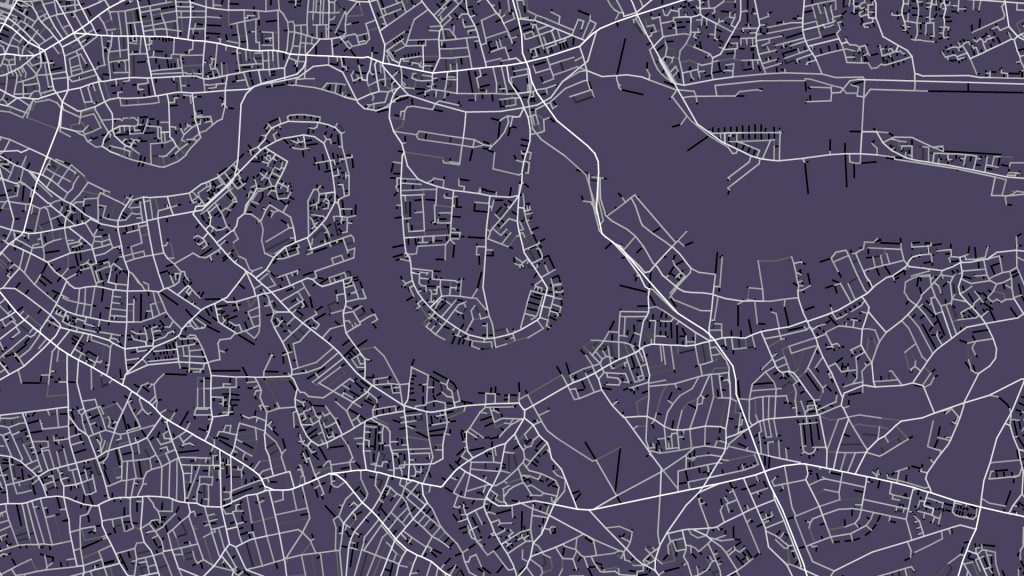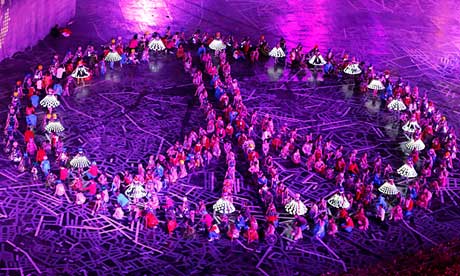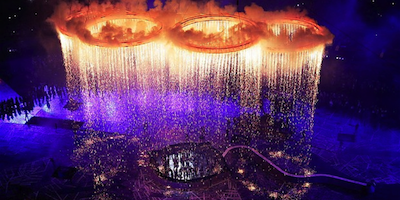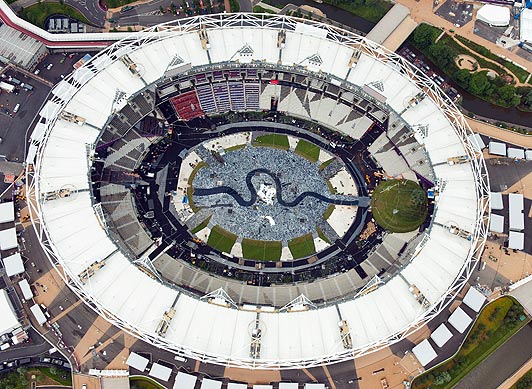
Space Syntax has created the giant map of London’s street network which formed an iconic part of the Opening Ceremony for the 2012 London Olympic Games.
The map – produced to advise on plans for new streets and public spaces in London – was spotted by the Games’ organisers in a book about the history of mapping in London.
More than a graphic – a regeneration tool
The map is one of many produced by Space Syntax to aid property developers and city municipalities plan some of the world’s largest urban centres, including Beijing, Sydney and Athens.
Based on mathematical analysis of street networks developed at UCL’s Bartlett School of Architecture, the map forecasts how people will flow through new developments and how this leads to social and economic benefits such as safer public spaces, more successful shops and higher property values.
Space Syntax, which was founded at UCL in 1989, has used its map to redesign key public spaces in London including Trafalgar Square, the South Bank Centre and the Barbican. The map has underpinned many new developments in the capital, including Broadgate and One New Change in the City of London. Most recently it has been used to test proposals for the regeneration of London’s Elephant & Castle and Earls Court, two of the largest regeneration projects in Europe.
How the map works
Computer software measures the degree to which each street in the network is likely to be used by people on foot, on bikes and in cars and where people are more or less likely to use parks and public spaces. Each street is assigned a unique mathematical value, which is converted into a unique shade of grey – giving the instantly identifiable map which will have been seen by billions around the globe.
Olympic legacy
The map was used to develop the masterplan for the Olympic site at Stratford City, where Space Syntax worked to connect the new streets and spaces into the existing communities surrounding the Olympic Park.
_____________
“This map captures the essence of London: people moving and interacting in space; sharing stories and ideas; trading, creating and innovating; a social and economic network, played out in streets and public spaces.
A city, after all, is a living entity, with life given by the millions of people who both shape and live in it.
The legacy of the Games will be felt long after the fireworks are over and the medals won – it will be the way in which the Olympic Park is used, and becomes part of the fabric of the East End. Space Syntax has played its part in making that happen.”
Tim Stonor
Managing Director, Space Syntax



